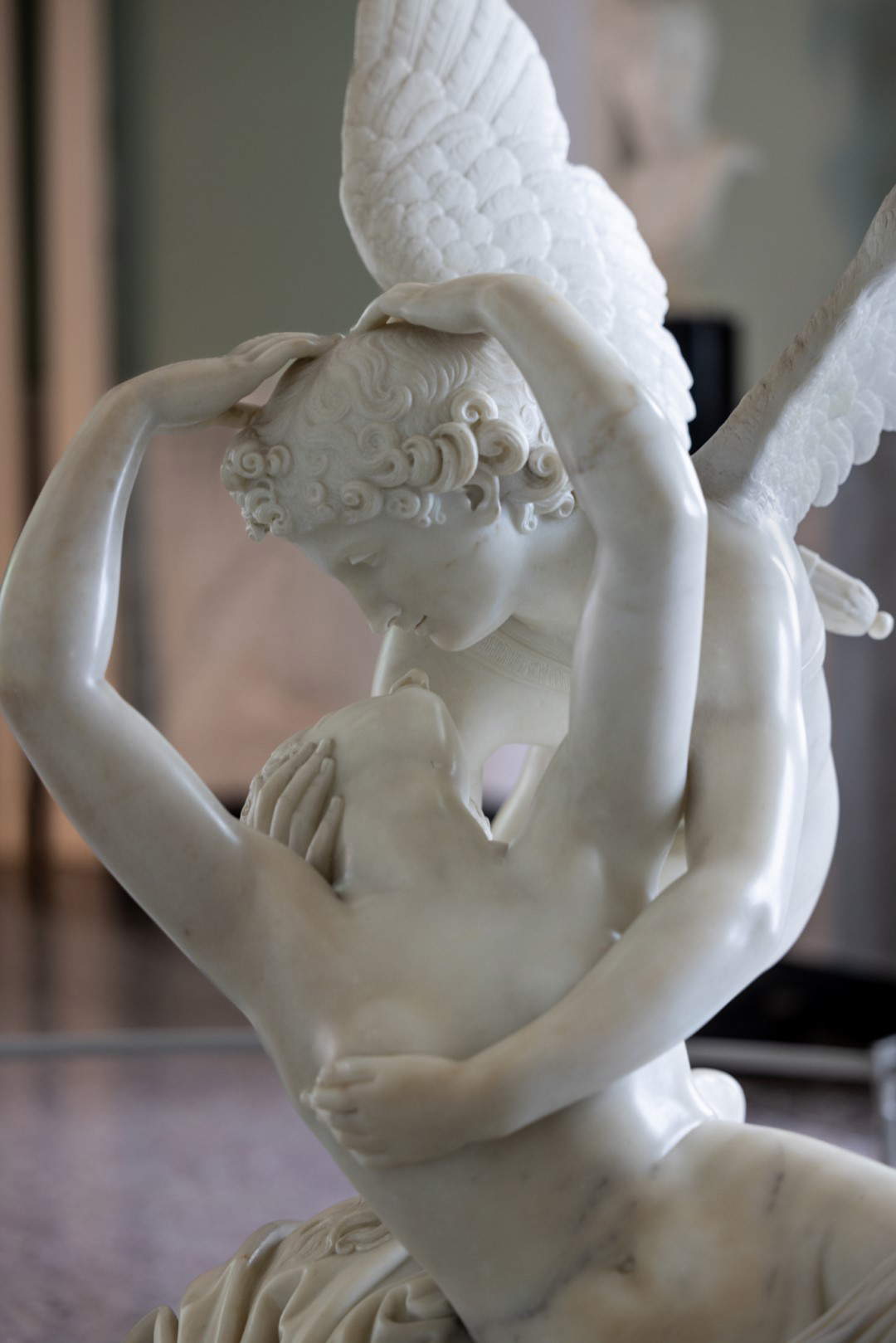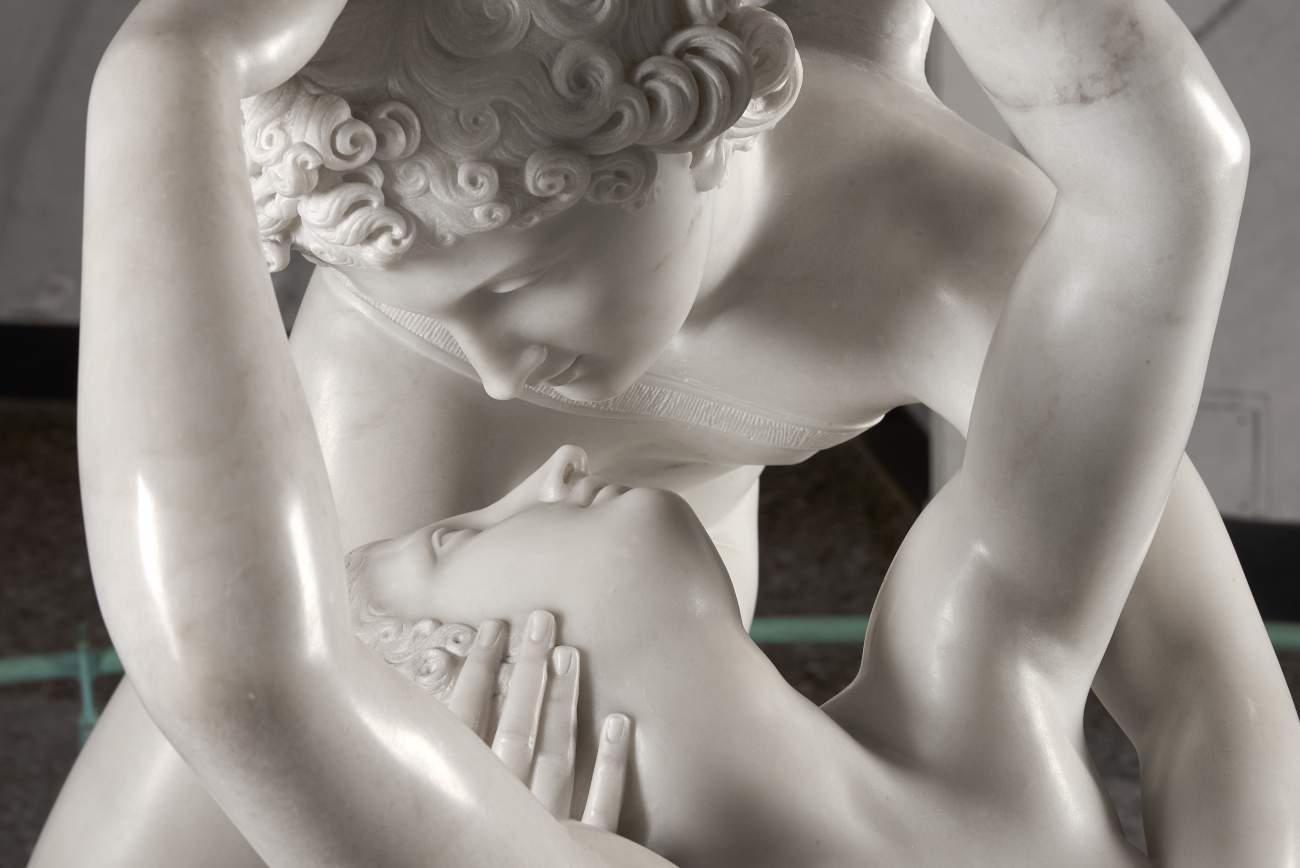From June 22 to September 30, 2024 at Villa Carlotta in Tremezzina it will be possible to visit L’Olimpo sul lago. Canova, Thorvaldsen, Hayez and the Treasures of the Sommariva Collection, an exhibition curated by Fernando Mazzocca, Maria Angela Previtera, Elena Lissoni to discover the Gods, Heroes and Myths that inspired Giovanni Battista Sommariva, patron and collector. Through a collection of masterpieces, the exhibition leads to the discovery of the great universal themes, love, death, friendship, virtue, variously interpreted in the Neoclassical age and in the new Romantic era, but always alive and relevant. Thanks to loans from important public collections and prestigious private collections, the exhibition restores all the richness of one of Europe’s most important collections between the Empire and the Restoration. There is also no shortage of works by Canova, Thorvaldsen, Wicar, Migliara, and Hayez; the series of more than one hundred miniatures from the Pinacoteca di Brera, reproducing the collection’s most famous paintings; precious engraved gems from important private collections; and the clock decorated with the figure of Zephyr, taken from the famous painting by Pierre-Paul Prud’hon, on loan from the Pitti Palace. From the precious fund of the Bibliothèque Stanislas in Nancy comes the History of Two Noble Lovers (Juliet and Romeo), illuminated on parchment by Giambattista Gigola, of which only seven copies exist. Also among the works on display is the highly refined drawing with The Burial of the Ashes of Themistocles by Giuseppe Bossi. This is flanked by the fine edition of Giovanni Gherardo De’ Rossi ’s Scherzi poetici e pittorici, one of the finest books printed by the “prince of printers” Giambattista Bodoni, which bears the poet Vincenzo Monti’s dedication to Count Giovanni Battista Sommariva. Never exhibited in Italy, Girodet paints Pygmalion and Galatea in the presence of Sommariva is one of the highlights in the exhibition, exceptionally granted by the Musée Girodet in Montargis.
The exhibition begins with the sculptor Luigi Acquisti ’s group with Mars, ready for war, and Venus, who holds him back with all her gentleness, the personification of triumphant beauty and love, the true ruling forces of the world. In Antonio Canova’s copy of the famous group, Cupid and Psyche, the maiden of human nature, who goes through difficult trials to win back Love and is finally transported to Olympus, becomes the emblem of the powerful and transformative force of love, capable of elevating the soul to immortality. In contrast, the Penitent Magdalene enhances the sensuality of the female nude, charging it with emotional valences, even in the copy by a still mysterious artist presented in the exhibition. Antonio Canova portrays Palamedes, inventor of the letters of the alphabet and of chess, a luminous hero unjustly condemned to death, while his great rival-the “Phidias of the North” -Bertel Thorvaldsen perpetuates the exploits of Alexander the Great in his masterpiece, the Frieze with The Triumphal Entry of Alexander the Great into Babylon, a marble version of the highest quality that echoes the first stucco proof for the Quirinal. Love and death intertwine in the surge of youthful passion in TheLast Kiss of Romeo and Juliet, a masterpiece by Francesco Hayez, in which the artist portrays his lover and model Carolina Zucchi as Shakespeare’s heroine. On the night of a full moon, in an exotic and distant landscape, Pierre-Jérome Lordon sets the epilogue of the unhappy love of Chactas and Atala, inspired by Chateaubriand’s famous novel. The exhibition will be accompanied by the catalog published by Silvana editoriale.

Texts by: Maria Cristina Brunati, Alberto Corvi, Omar Cucciniello, Bernardo Falconi, Daniela Gallo, Stefano Grandesso, Francesco Leone, Marco Leoni, Stefano Levati, Elena Lissoni, Isabella Marelli, Moira Mascotto, Fernando Mazzocca, Maria Angela Previtera, Giorgio Sassi, Lucia Pirzio Biroli Stefanelli.
“Most of them still kept at Villa Carlotta, some of them dispersed during the nineteenth century, many of the works from the Sommariva collection-executed mostly on commission-are finally returning to the museum’s halls. With new eyes, visitors will be able to admire the masterpieces of the Sommariva collection thanks to the rearrangement of some rooms that will be renovated on the occasion of the exhibition in order to enhance this important cultural heritage that has always aroused awe and wonder - says Maria Angela Previtera, Director and curator of the Exhibition. Nestled in one of the most beautiful gardens in Europe, which still preserves extremely rare botanical specimens and monumental plants, the Villa was for Sommariva the place where the beauty of art and nature met: not only a collector but a skilled entrepreneur and an expert agronomist, he had acquired new land for cultivation - of vines and olive trees above all - continuing a vocation that dated back to the Age of Enlightenment, still of extraordinary relevance today since it was based on the exemplary and intelligent respect for the peculiarities and historical and social identity of the territory,” Maria Angela concludes.
“The splendor of Sommariva - who for Francis Haskell was the leading French patron of the early 19th century, except for the emperor and his family - shone forth in Paris where Canova’s celebrated Magdalene, enhanced by an astonishing setting, stood out among masterpieces by David, Prud’hon, Guérin, Gérard, Granger, Girodet, Angelika Kauffmann and Appiani, and a whole series of works and objects d’ art that give an idea of the variety of his interests and the versatility of a collecting that restores to us, like few others, the taste of his time traversed by epochal changes,” explains Fernando Mazzocca, “but just as much fame must have come to him from the renovation and ’setting up of one of the most celebrated ”ville di delizia,“ that of Clerici at Tremezzina, now Villa Carlotta, which was his favorite residence because of the mildness of the climate and the enchantment of Lake Como already celebrated in antiquity and the Renaissance. He proudly made it a kind of sanctuary dedicated to sculpture, amid the presence still of his beloved Canova and the celebration of the glory of the man he called the ”Phidias“ Thorvaldsen represented by his greatest masterpiece, that ”portentous bas-relief“ with the Triumphal Entry of Alexander into Babylon,” concludes curator Fernando Mazzocca.
“Realized thanks to immense riches, but above all through that unique and special relationship Sommariva had known how to weave with the greatest artists of his time,” Elena Lissoni stresses, “His collection testifies to the truly exceptional story of a patron of European greatness.”
 |
| Canova and Hayez, Olympus on the Lake: the exhibition at Villa Carlotta |
Warning: the translation into English of the original Italian article was created using automatic tools. We undertake to review all articles, but we do not guarantee the total absence of inaccuracies in the translation due to the program. You can find the original by clicking on the ITA button. If you find any mistake,please contact us.